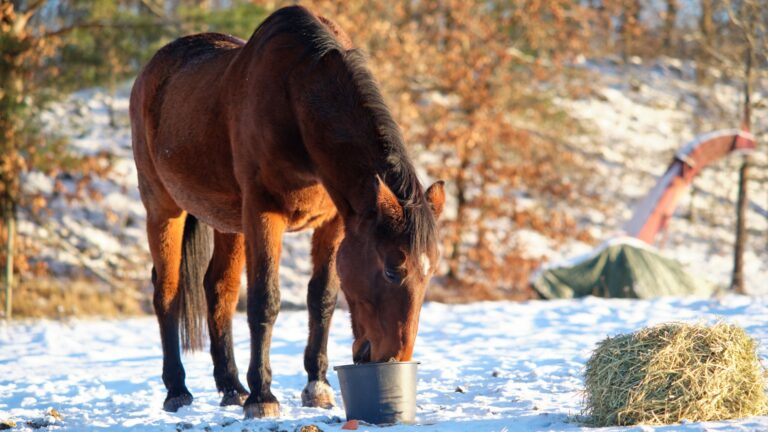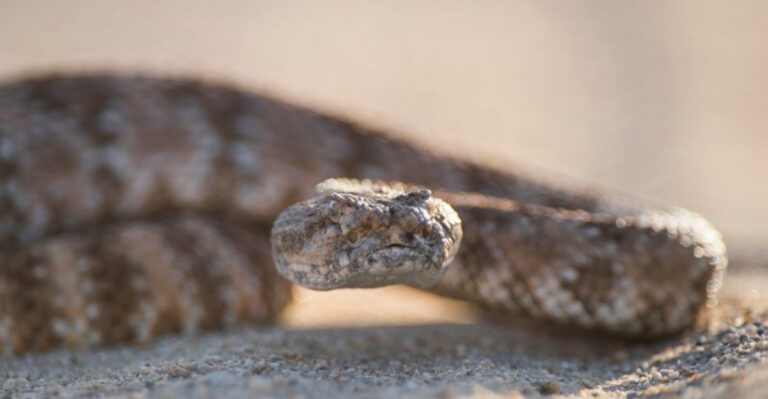Why Male Frogs Puff Up Their Throats To Woo Mates
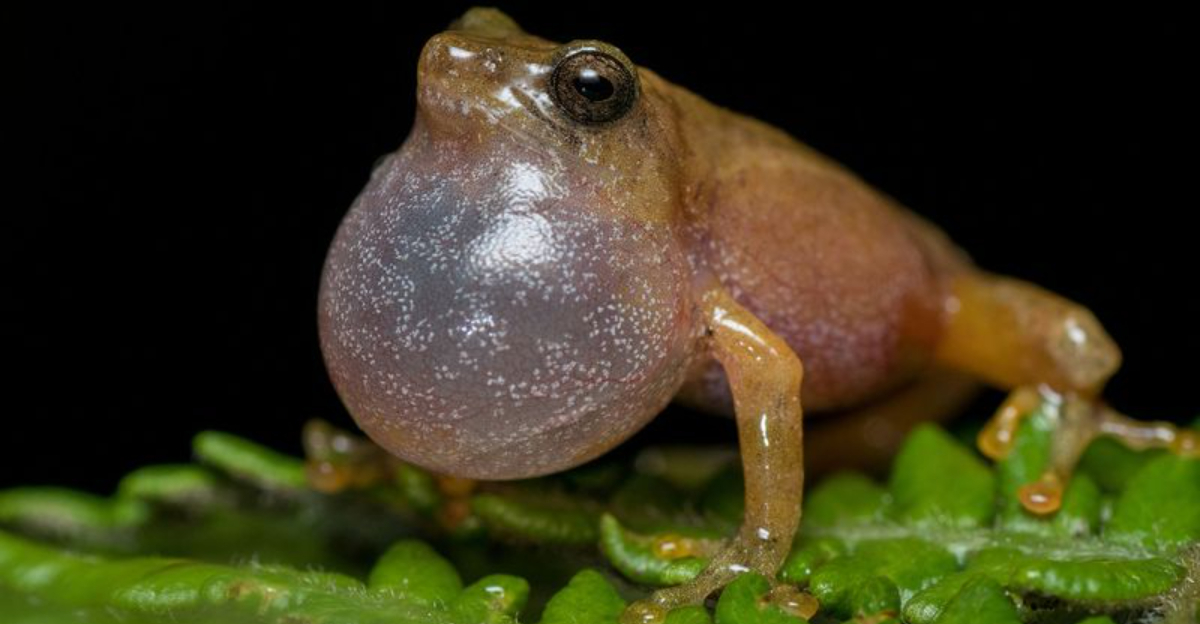
Ever noticed those bulging throats on male frogs during spring nights? Those inflated vocal sacs aren’t just for show – they’re essential tools in the fascinating world of frog romance.
Male frogs have evolved these remarkable adaptations specifically to attract female partners in their watery habitats. The next time you hear a chorus of croaks after sunset, you’re witnessing one of nature’s most elaborate courtship displays in action.
Male Frogs Use Vocal Sacs To Make Loud Mating Calls

Those balloon-like pouches under a male frog’s chin serve as natural amplifiers for their love songs. When air moves back and forth between the lungs and these elastic sacs, it creates those familiar croaking sounds we hear on spring nights.
The vocal sac works like a built-in speaker system, turning what would be quiet noises into attention-grabbing calls. Without these special throat pouches, male frogs would struggle to be heard in busy wetlands.
Female frogs rely on these audible advertisements to find suitable mates among the vegetation and murky waters. For many frog species, this vocal performance represents their primary method of courtship.
Throat Puffing Amplifies Their Croaks
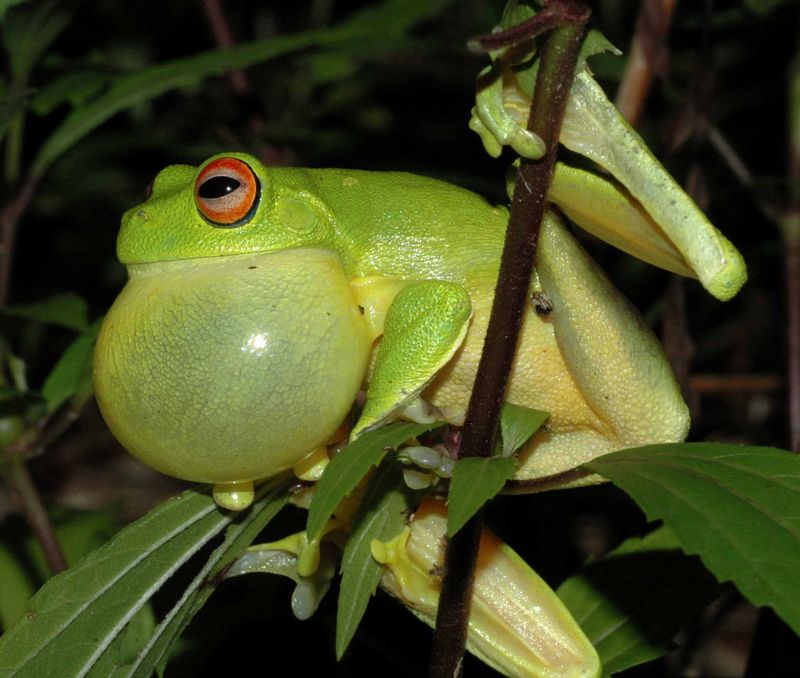
The science behind frog calls is truly remarkable. When a male frog pushes air from his lungs into his vocal sac, it creates a resonating chamber that works like a natural megaphone. This clever adaptation turns quiet sounds into powerful broadcasts that can be heard from surprising distances.
Sound waves bounce around inside the inflated sac before projecting outward with greater volume and clarity. Some frogs can amplify their voices by up to 20 decibels using this technique!
For smaller frog species especially, this sound-boosting strategy makes all the difference in their ability to attract mates in noisy environments.
It Helps Their Calls Travel Farther In Wet Habitats
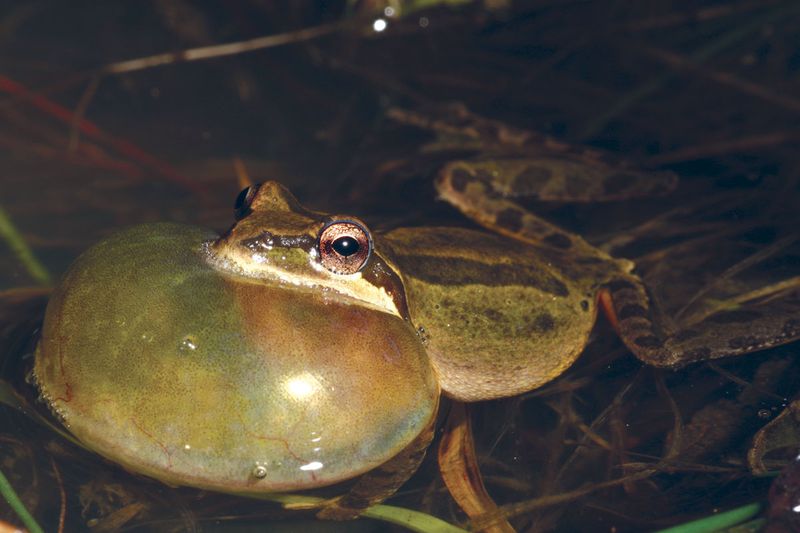
Water and dense vegetation absorb sound waves, creating a challenging environment for communication. Male frogs overcome this obstacle with their expandable vocal sacs, which help project their calls through humid, sound-dampening environments.
The shape and elasticity of these specialized pouches allow frogs to produce lower-frequency sounds that travel farther through water and thick foliage. Clever adaptations in the throat tissue minimize sound distortion even when calls bounce off water surfaces.
Some frog species can broadcast their mating calls up to a mile away on still nights! This impressive range ensures females can locate potential mates even in complex wetland landscapes.
Females Listen For Volume, Pitch, And Repetition
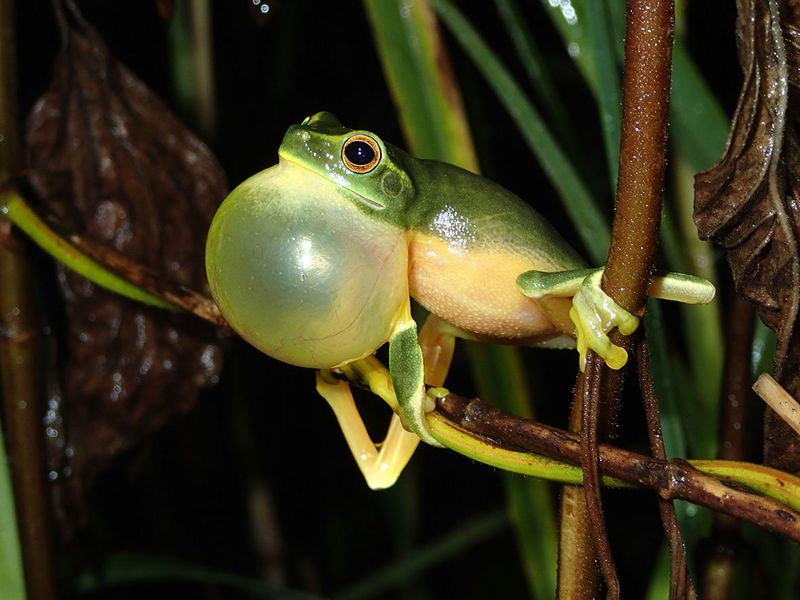
Female frogs are picky listeners with sophisticated preferences. They evaluate potential mates based on specific qualities in their calls – including volume, pitch, rhythm, and how frequently they repeat.
A male’s vocal performance reveals crucial information about his fitness as a potential father. Research shows females can distinguish between subtle differences in call patterns that human ears might miss entirely.
Many species show preferences for lower-pitched calls (indicating larger males) and consistent calling (showing stamina and health). This selective listening has driven the evolution of increasingly complex vocal sacs and calling behaviors over millions of years, creating the diverse symphony of frog sounds we hear today.
The Bigger The Throat Sac, The Louder The Call
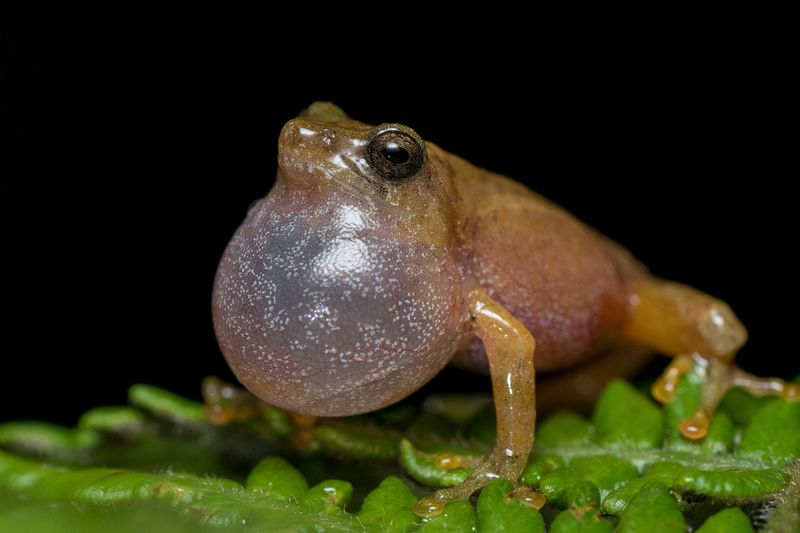
Size matters in the world of frog romance! Males with larger vocal sacs can produce deeper, louder calls that travel farther through their habitat. These impressive performers often attract more females than their smaller-pouched competitors.
The relationship between sac size and call quality isn’t just about volume. Larger vocal sacs allow for more complex call patterns and sustained calling sessions without exhaustion.
During breeding season, some male frogs develop temporarily enlarged vocal sacs – similar to how deer grow antlers. This seasonal adaptation shows just how important these sound-producing structures are to reproductive success in the amphibian world.
Loud Calls Signal A Healthy And Strong Mate
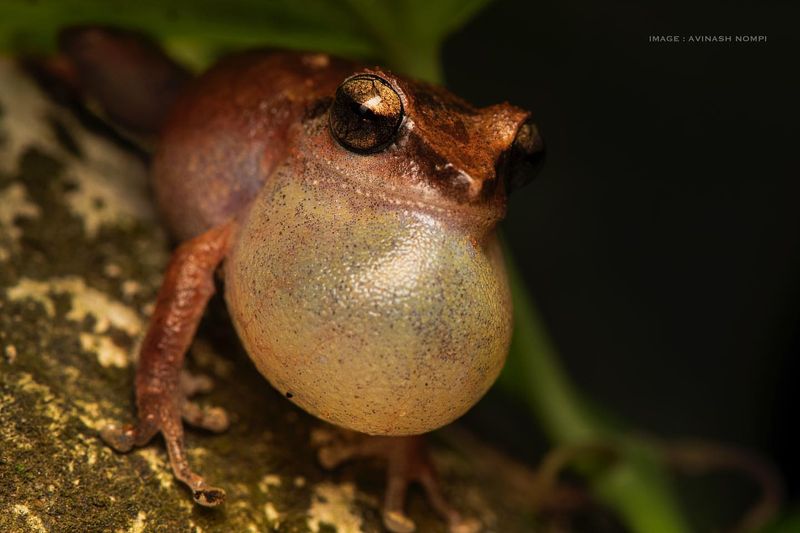
A frog’s mating call serves as an honest advertisement of his overall condition. Producing powerful, sustained calls requires significant energy and excellent physical health – qualities that can’t be faked in the frog world.
Males weakened by parasites, poor nutrition, or environmental stress simply can’t maintain the calling marathon that healthy individuals can. Female frogs have evolved to recognize these differences because choosing a vigorous mate increases her chances of producing healthy offspring.
Scientists studying tree frogs discovered that males with the most impressive calls also showed better immune function and parasite resistance. This connection between vocal performance and genetic quality makes throat-puffing one of nature’s most reliable dating profiles!
Each Frog Species Has A Unique Call Pattern
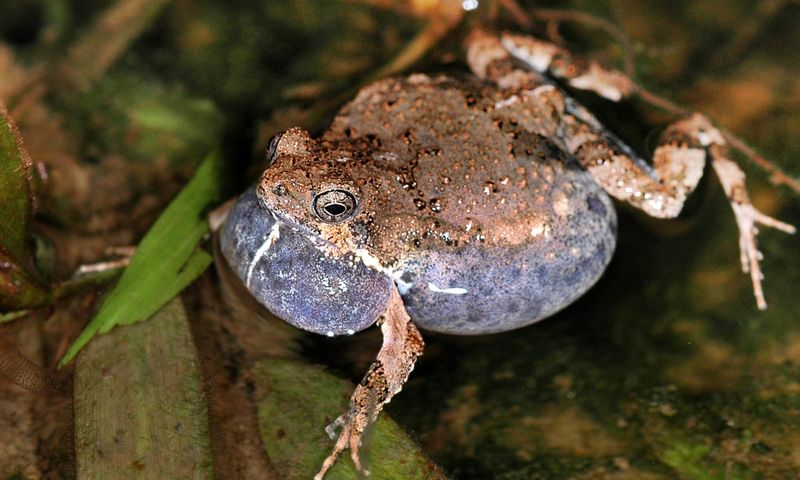
The amphibian world boasts an astonishing variety of vocal signatures. From the melodic trills of spring peepers to the deep “jug-o-rum” of bullfrogs, each species has evolved its own distinctive sound pattern – created through specialized vocal sac structures.
These unique calls serve as auditory “name tags” that help females find males of their own species in mixed-species ponds. The specific rhythm, pitch, and pulsation rate act like a password that prevents hybridization between similar frog species.
Amazingly, some closely related species that look nearly identical can be told apart instantly by their calls. Biologists often identify frogs by recording their calls rather than trying to spot the well-camouflaged amphibians visually.
Some Frogs Call In Groups To Attract More Attention
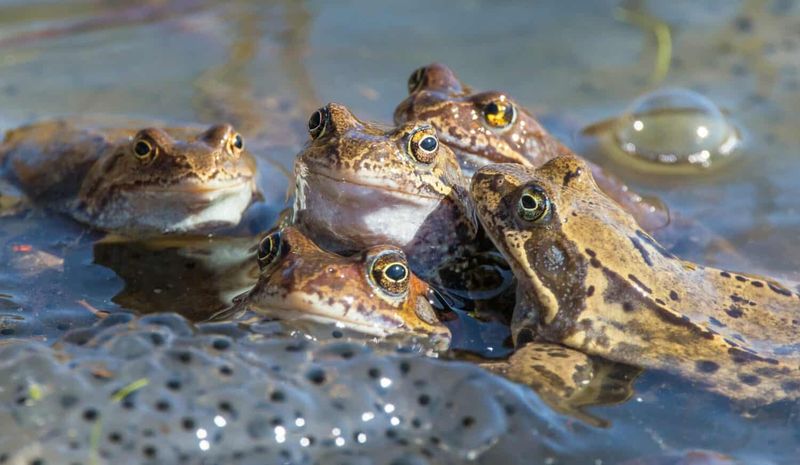
The synchronized chorus of male frogs creates one of nature’s most remarkable concerts. Many species form calling groups where dozens or even hundreds of males vocalize together, creating a powerful sound that carries much farther than individual calls.
These frog choirs follow fascinating patterns – sometimes taking turns in organized sequences, other times creating rhythmic waves of sound across a pond. The collective display attracts more females to the area than lone callers could manage.
Within these choruses, competition is fierce. Males strategically position themselves and adjust their calling timing to stand out from neighbors. The resulting amphibian orchestra represents a complex balance of cooperation and competition among throat-puffing performers.
Puffing Also Makes Males Appear Bigger To Rivals
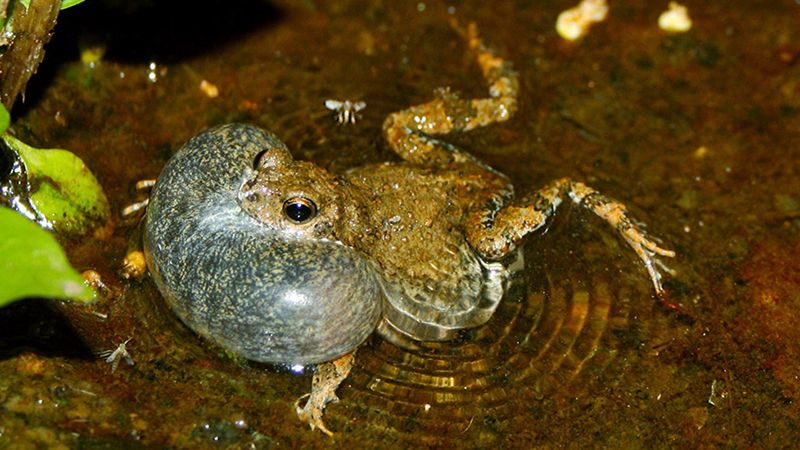
Vocal sacs serve a dual purpose in the competitive world of frog dating. Beyond attracting females, these inflatable pouches create an intimidating visual display that warns other males to keep their distance.
When fully expanded, a frog’s vocal sac can temporarily increase his apparent size by up to 50%! This size illusion helps establish territory and prevents physical fights that could waste energy or cause injury during the critical breeding season.
Male frogs often face off in calling duels where they alternate increasingly aggressive calls while displaying their inflated throats. These vocal standoffs usually end with the smaller male retreating, having accurately judged his competitor’s size through both sound and sight.
It’s All About Standing Out In A Noisy, Competitive Pond

Spring ponds transform into nature’s version of speed-dating venues, with dozens of species all calling simultaneously. Male frogs face the ultimate challenge: making their voices heard above the cacophony of competitors, insects, wind, and water sounds.
Evolution has shaped frog vocal sacs into remarkable adaptations that help them claim their sonic space. Some species call at different times of night to avoid overlap, while others develop unique frequency ranges that cut through the noise.
The most successful males find ways to position themselves in acoustic “sweet spots” – locations where their calls carry particularly well. All these strategies highlight how throat-puffing represents millions of years of evolutionary refinement in the quest to find love in a crowded pond.


